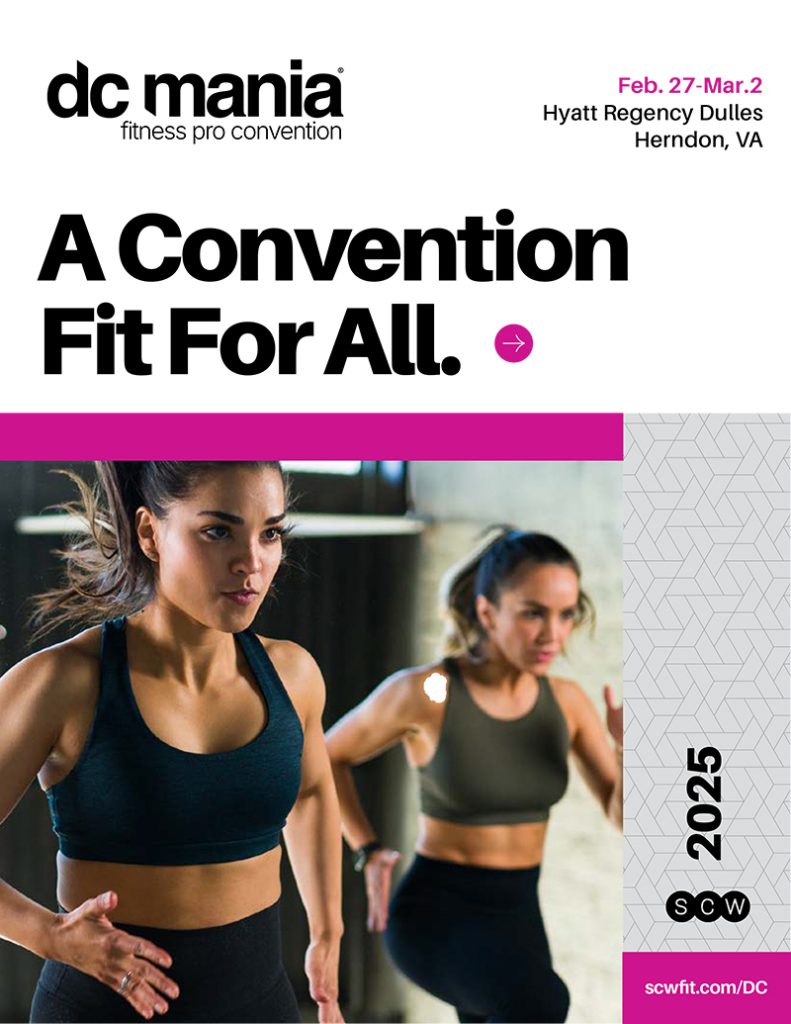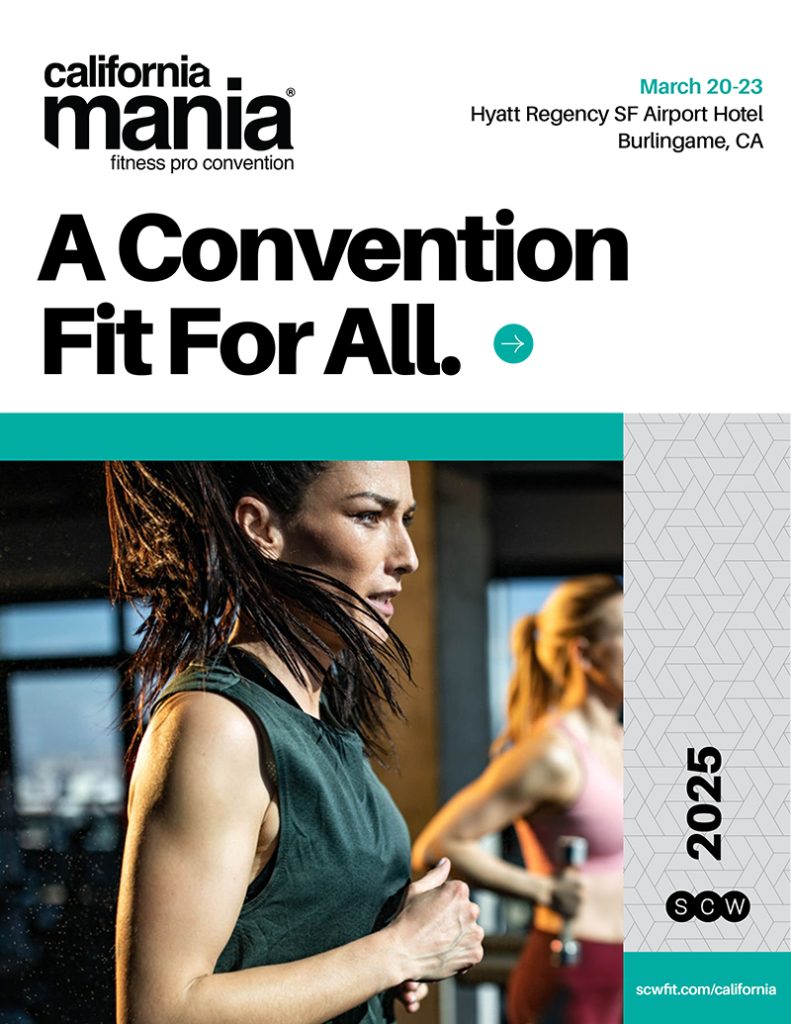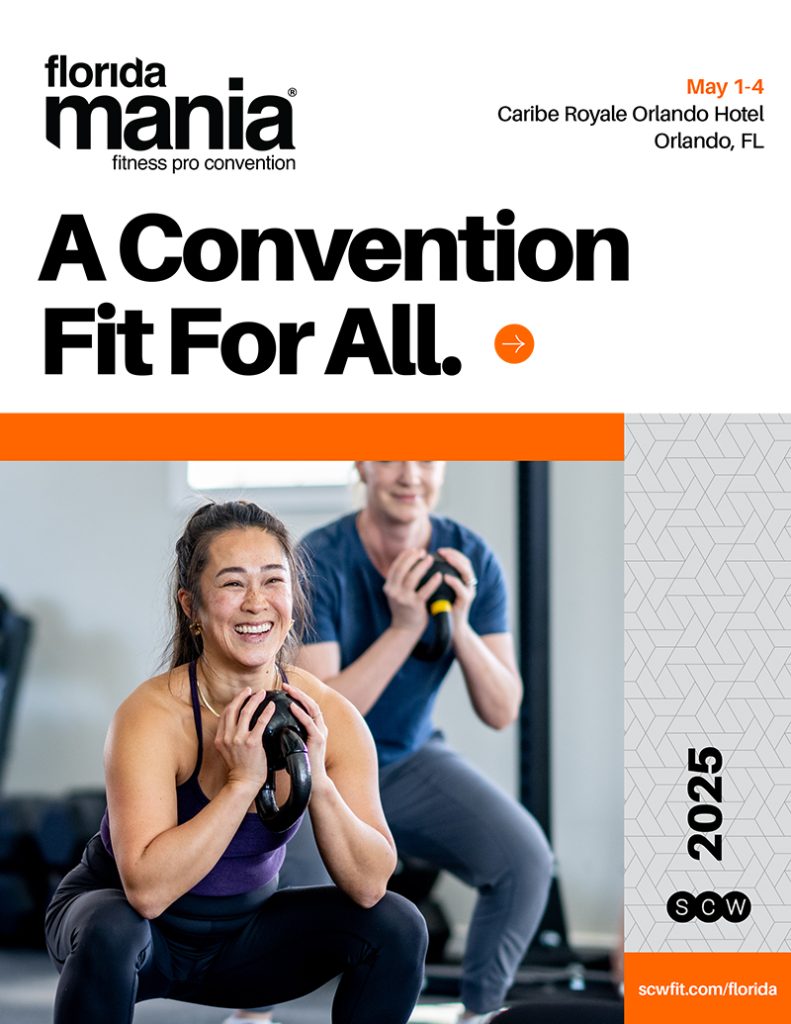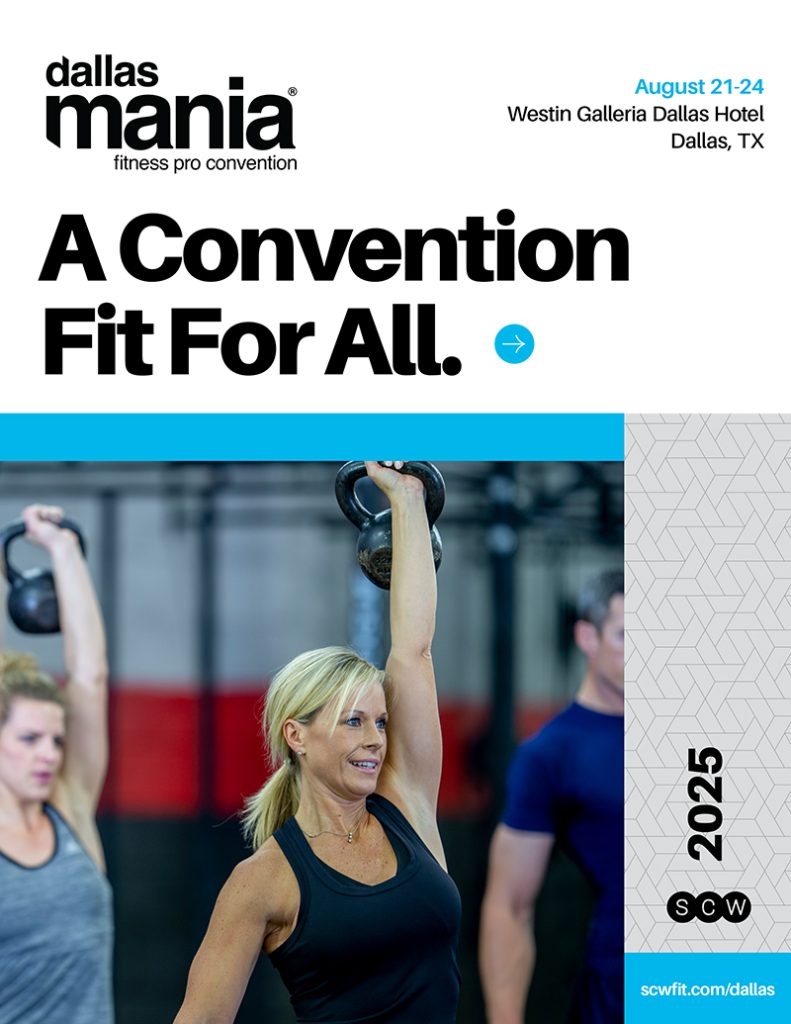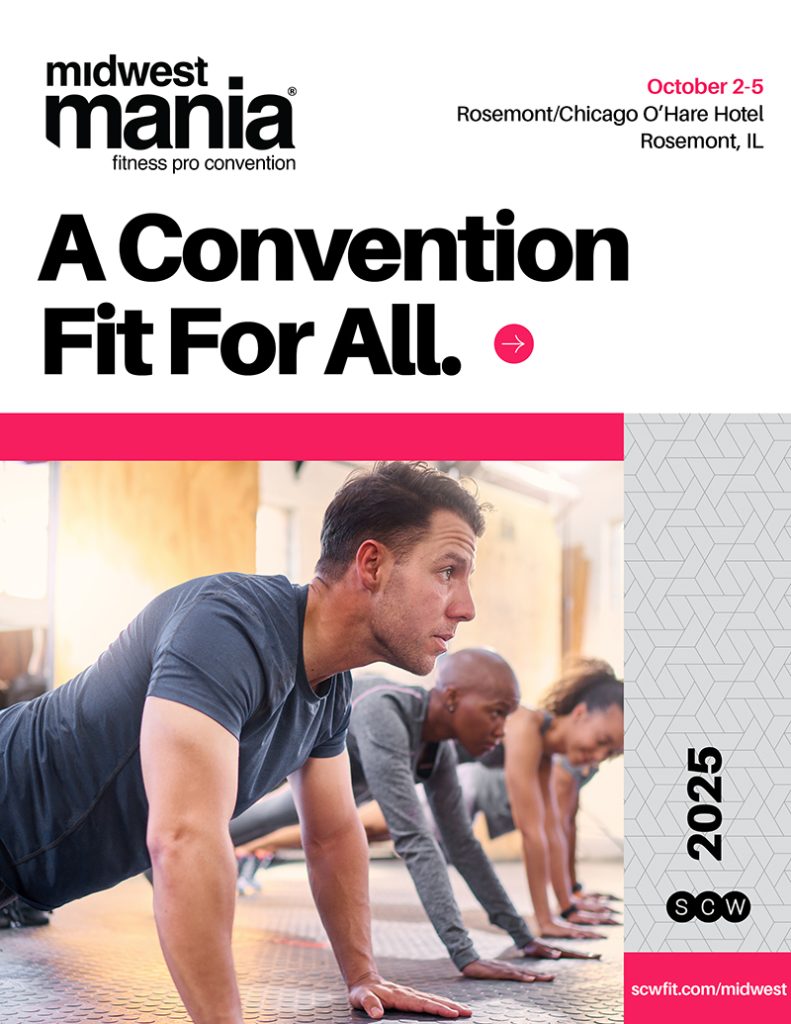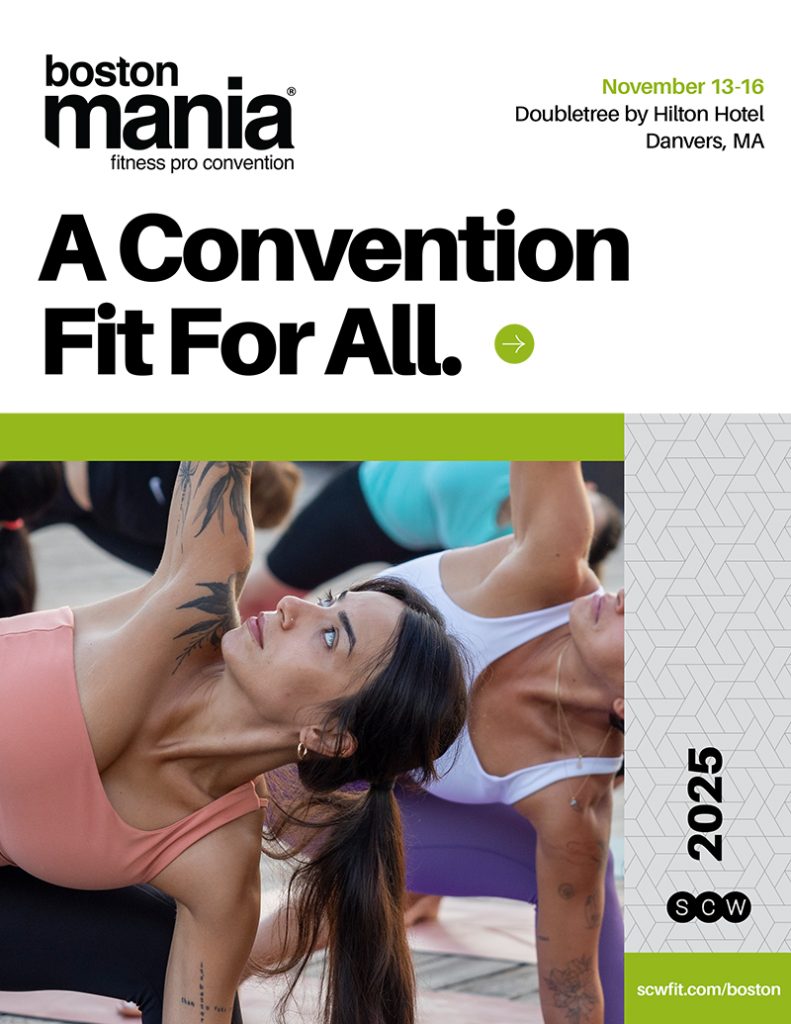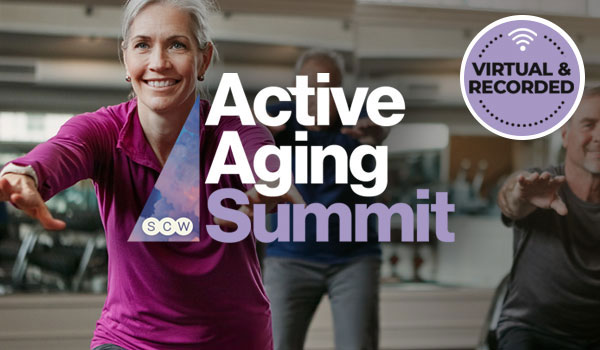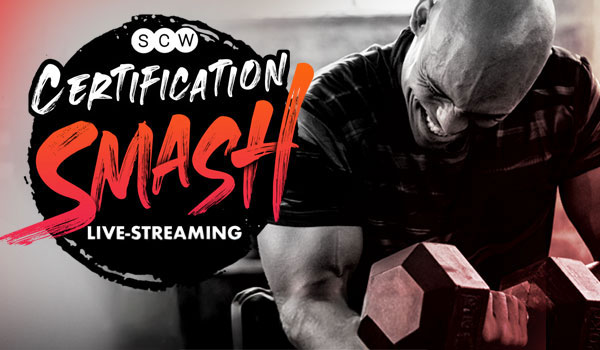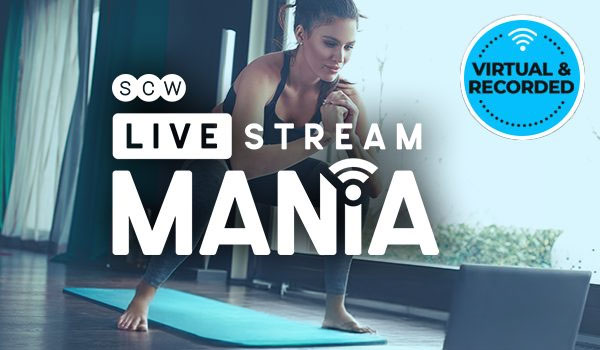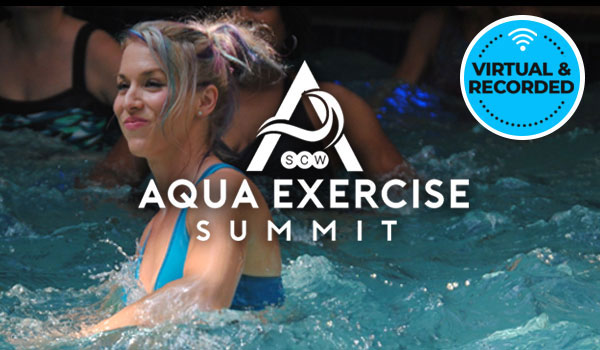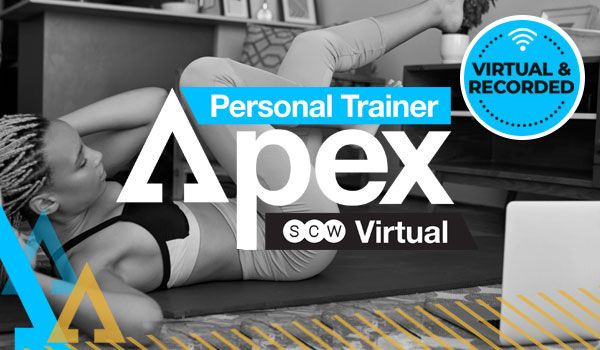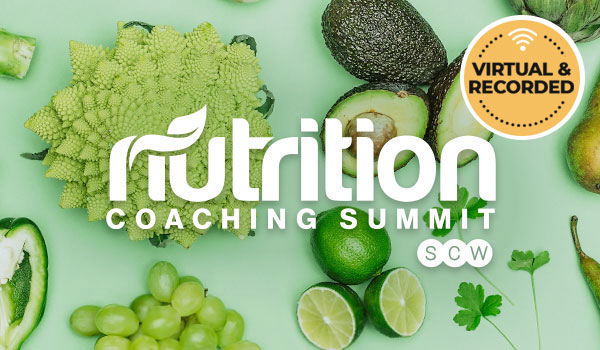
SCW Spotlite: Issue 62

3 Big Benefits of Heat Training
The world’s average temperature hit its highest level in recorded history recently, around 63 degrees Fahrenheit, according to data from the University of Maine’s Climate Reanalyzer.
So, if you’ve been struggling a little more than usual training in the heat, it’s not your imagination!
But there’s a reason they say ‘Fall race PR’s are made in the summer’ – Enter: Heat Training
Let’s take a look at the benefits of training in crazy hot temps…
What’s Heat Training?
As a triathlete, I’ve always been interested in ways to improve my performance and get an edge on the competition for myself and my athletes.
Heat training involves exercising in a hot and humid environment, with the goal of improving your body’s ability to regulate temperature and perform better in extreme conditions. It’s a technique that’s been used by athletes for decades, from marathon runners to professional football players.
And the science behind it is pretty compelling – heat training can increase blood flow, stimulate the production of red blood cells, and even improve mental toughness.
Of course, it’s not without its challenges – training in the heat can be tough on your body, and you need to be careful not to overdo it.
What are the Benefits of Heat Acclimation for Triathletes?
The case for heat acclimation has plenty of research behind it – here’s what you need to know!
Improved Heat Tolerance
Heat acclimation is a key factor in helping triathletes improve their performance and overall endurance. By gradually exposing their bodies to higher temperatures and humidity levels, athletes can enhance their heat tolerance levels, allowing them to perform better and longer when competing in high heat conditions.
Studies suggest that heat acclimation can help to increase blood volume, reduce the strain on the cardiovascular system, and improve the body’s ability to store and utilize oxygen.
If you’re a triathlete with an early fall race or simply want to go the distance in hot and humid environments, consider incorporating heat acclimation exercises into your training program.
Increased Sweat & Decreased Sodium Concentration
When you acclimate to the heat, your sweat glands become more efficient, producing more sweat to help lower your core body temperature and prevent heat illness. Not only that, but your body also becomes better at storing water, which boosts your cooling capacity and prevents dehydration.
What About Sweat Rate?
But how much does heat acclimation actually increase sweat rate? Well, it’s a bit challenging to answer because there are many factors at play, such as temperature, humidity, exercise intensity, body size, and more.
However, studies have shown that there can be a slight increase in sweat rate after acclimating to the heat, typically ranging from 0% to 20%.
What About Sodium?
Now, you might be wondering if sweating more means losing more sodium as well. Interestingly, heat acclimation actually decreases the sodium concentration in your sweat. This is great news because it helps you avoid issues like headaches, fatigue, and heat illness caused by sodium deficiency.
In fact, research has shown that sweat sodium concentrations can drop by approximately 30% to 50% after acclimating to the heat. So, despite sweating more, you actually retain more of this important electrolyte.
To sum it up, heat acclimation is a wonderful adaptation that allows your body to handle heat more effectively. So, embrace the sweat and enjoy the benefits of this incredible process! Just make sure to hydrate and fuel properly – especially in the heat!
Improved Athletic Performance
Did you know that heat acclimation training can significantly enhance time trial performance in athletes?
Interestingly, while the researchers didn’t observe differences in various physiological measures such as maximal heart rate, maximum oxygen uptake, core body temperature, and skin temperature for heat-acclimated athletes, they concluded that athletes who undergo heat acclimatization training may be able to handle more thermal stress.
It seems that some benefits of heat acclimation might be psychological, enabling athletes to perform at a higher intensity for a longer duration.
VO2 max is a key marker of endurance and overall fitness. Another study reveals that heat acclimation can lead to enhancements in VO2 max both in cool and hot environments. It’s worth noting that performance improvements are particularly significant in hot conditions.
Heat Acclimation: How Long Does It Last?
Heat adaptations begin to diminish as soon as you stop training in a hot environment. Studies show that every “off day” result in a 2.5% decrease in heart rate and core body temperature adaptations.
Heat acclimation can be tough, and elite athletes face other training and rest needs, as well as travel-related obstacles.
Luckily, living in Texas, we can step out our front door for some awesome state-of-the-art heat training… no sauna suit needed!
The Wrap – Benefits of Heat Training for Triathletes
All in all, training with heat and intensity is one of the best things an Ironman triathlete can do to prepare for any race.
Even if you don’t live in an area that experiences hot temperatures on a regular basis like we do in Texas, taking steps like breaking a sweat before workouts or sleeping under layers of covers are simple but effective methods for helping your body get used to more intensive heat levels.
Heat and intensity can be challenging and even uncomfortable during actual races, but putting in the time to prepare and acclimating your body can help ensure you’re ready for anything!
 About the Author: Jules Simon
About the Author: Jules Simon
Jules writes about her life as a migraine warrior, chronic illness fighter, and pretty much all things faith, fitness, and food! She is passionate about encouraging others in their journey to health and wholeness based on her personal experiences. Jules has certifications in personal fitness training and nutrition. She previously managed digital marketing teams in large tech firms – but today you can find her writing, running, or playing with her pups. www.xojulessimon.com
Follow us on IG: https://www.instagram.com/scwmania/
Like our FB page: https://www.facebook.com/scwmania
Follow us on X: https://twitter.com/scw_mania
Connect with us on LinkedIn: https://www.linkedin.com/company/scwfit/

Why Aerobic Work Is Essential
by Carl Hardwick
Courtesy of AthletechNews
 About the Author, Carl Hardwick
About the Author, Carl Hardwick
Carl Hardwick, CEO of OPEX Fitness & CoachRx is a strong advocate for bringing honor to the coaching profession and raising the value of all fitness coaches. He lectures frequently about program design, business systems, and building a sustainable coaching career. Follow him on Instagram @hardwickcarl and OPEX Fitness on YouTube
Follow us on IG: https://www.instagram.com/scwmania/
Like our FB page: https://www.facebook.com/scwmania
Follow us on X: https://twitter.com/scw_mania
Connect with us on LinkedIn: https://www.linkedin.com/company/scwfit/

5 Common Mistakes Your Clients Might Be Making During a Barre Class
by Kerrie Melissaratos
Teaching your clients proper body awareness at the barre will condition their bodies to help them throughout their daily life: improving posture and helping them achieve a healthy, supple, and strong body.
Remember, you don’t have to be a dancer to take a barre class, but good technique is definitely vital to any fitness program.
Here are five common mistakes clients make during a barre class and how to avoid or correct them.
- Not using your core effectively.
During an ab-focused workout, especially when engaging in forward flexion, people tend to push the abdominal wall out instead of engaging it properly.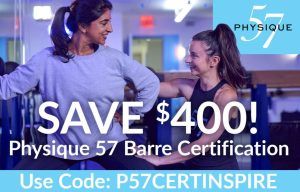
During ab exercises, you want to cue clients to exhale and draw their navel towards the spine.
How to fix it:
– Encourage your clients to simply look down at their core and observe what is happening in their own bodies. Guide them through how to properly connect to their core, and the benefits of working correctly.
Great cue to use:
– Take the time to break down how to properly engage the core by focusing on lifting their abs in and up. Use visual cues or imagery to help your clients connect to their abs. Example: “Draw your belly button to the spine.”
– Remember that it’s about building strength in their core, especially the transverse abdominis, those deepest core muscles.
- Using weights that are too light.
At Physique 57 we use heavier weights to make the workout efficient. The heavier the weights, the fewer repetitions you will need to do to yield the same results. If your clients are intimidated to try heavy weights, you can suggest they start with the heavy weight and drop down to lighter ones if it becomes too intense.
How to fix it:
– No matter the class, encourage your clients to choose weights that push them outside of their comfort zone, so the workout continues to be challenging, leading to better results.
Great cue to use:
– Talk to your clients about the benefits of using heavy weights and how this will help them reach their personal fitness goals.
- Skipping stretch time.
Stretching may be incorporated throughout the workout or kept until the end of class depending on the class you take. If there is a longer stretching segment at the end, encourage your clients to stick around for it. Stretching is not only a way to release tight muscles, but also beneficial to release mental stress and tension.
How to fix it:
– Talk about the benefits of staying in class for the final stretches. If their goal is getting a strong and sculpted body, then they should know that the more flexible they are the deeper they will be able to get in barre moves and positions, which will only multiply their results.
Great cue to use:
– “Stretching is the time to reward your body and thank your body for all the hard work you have just done. Enjoy this time for yourself!”
- Holding your breath.
When doing barre workouts (or any workout), clients tend to hold their breath when things get challenging, This can increase the risk of injury and weaken the effectiveness of barre movements.
How to fix it:
– Teach them to use their breath as a tool to help further engage their muscles and deepen their potential. Guide them to focus on deep breathing, especially in the most intense moments. It will boost their energy and help them push further.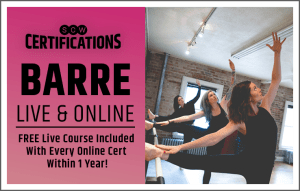
Great cue to use:
– While teaching class, be mindful of adding in more cues to remind clients to breathe. They need the reminder to exhale through the hardest parts of class and to help them to relax during stretches.
- Thinking barre is not a cardio workout.
Physique 57 is one stop shop, cardio, strength training, and stretch all in one class. The class is designed to work in all planes of motion that push the body into momentary muscular fatigue. The intensity of the workout will drive your client’s body to shake and burn calories throughout the class as well as for several hours after. Barre exercises build stamina and burn calories.
How to fix it:
– Many people think barre workouts don’t have the same intensity as other exercises. Beginners often think of it as easy. When you meet new clients be sure to give them a quick overview of what to expect throughout the class.
Great cue to use:
– Give all clients permission to listen to their bodies and to adapt their class as needed. Remind them to shake it out when needed, the burn and the shake is a sign they’re getting stronger!
Raising the Barre and Avoiding Mistakes
It’s pretty common to see these mistakes especially with your newer clients. But with the right guidance, your clients will achieve proper form and your goals pretty quickly!
Inspired to Become a Leader in The Growing Barre Industry?
Enroll in our in-depth 80-hour Physique 57 Barre Certification!
Take advantage of our special offer, ONLY $899
Regular price $1,299 (save $400 when paid in full)
SIGN UP NOW at https://physique57.com/barrecertification/
Discount code: P57CERTINSPIRE
Physique 57 is recognized by the National Academy of Sports Medicine and the Athletics and Fitness Association of America as an Approved Continuing Education Provider.
Earn 1.9 NASM CEUs & 15 AFAA CEUs. You can also visit www.physique57.com to learn more about our feel-good movement.
 About the Author: Kerrie Melissaratos
About the Author: Kerrie Melissaratos
Kerrie graduated from Cal Arts with a BFA in Dance/Choreography and a minor in Psychology. She has danced professionally in both New York and California. She moved to New York in 2015 and began working with Physique 57 the same year. Kerrie is the Production Coordinator for Physique57’s fast-growing worldwide Video on Demand platform. She believes that you have the strength within; it’s your mind that scares you! Kerrie lives by the quote “Change begins at the end of your comfort zone!”
Follow us on IG: https://www.instagram.com/scwmania/
Like our FB page: https://www.facebook.com/scwmania
Follow us on X: https://twitter.com/scw_mania
Connect with us on LinkedIn: https://www.linkedin.com/company/scwfit/

Mindfulness Body Care Practices that Promote Self-Love
by Nina Smiley
Courtesy of WellSpa360
Each of us has a body. Sometimes we’re aware of it, and other times not so much. Mindfulness, moment-to-moment awareness of what is in a gentle nonjudgmental way, invites us to be present and aware of the body.
When we’re nonjudgmental, we can observe our thoughts and feelings to gain insights. When we apply these insights to how we feel about the body, we can see patterns of behavior and learn from them. Let’s take a minute to apply mindfulness to the body we have and explore our relationship to it.
When you think about having a body, what’s the first thing that comes to mind? Where do your thoughts go? Do you think about your body as a whole? Do you think about specific aspects of your body? Do you think about things that your body does? Do you think about things that you can’t do? Do you think about your body’s needs? Do you think about self-care? There are so many aspects to consider. Whether front and center or hidden by denial, the body matters and cannot be ignored. Let’s look at it mindfully!
Liking the Body
Along with the content of what comes to mind, there may be feelings. How do you feel about your body? Take a moment to answer honestly. Are there some things you like about your body? Are there some things you don’t like? There are no right or wrong answers. Mindfulness invites us to be curious about what we’re thinking and feeling.
Liking our own bodies is determined by so many things: our cultural context, our personal history, the messages we get from the media, from our families, from our friends. It can change based on the way our clothes fit, our beliefs about weight, a remark or casual comment, a role model from youth—the possibilities are endless.
Liking the body is also linked to judging the body. (Have I succeeded in achieving the look, weight, musculature I desire?) Liking the body is often comparative, if not competitive. Questions such as, “Does she look more attractive than me?” or “Who’s wearing that item of clothing better?” come to mind.
It can also be conditional, based on outcome. “I’ll be happy when I’m a size 6,” or “I’ll feel better about myself when I can fit into my old jeans.” Unfortunately, the liking can evaporate in a moment if we step on a scale and see a number that upsets us.
If there are things you don’t like about your body, you’re not alone. In a 2020 survey, 55% of American women and 42% of men reported some dissatisfaction with at least one aspect of their appearance.
While we may not like everything about our looks, we can move toward appreciating our body beyond that sole criterion. Our cultural obsession with appearance has been described as “beauty sickness,” where focusing on looks takes over other aspects of our lives, such as attention to health, well-being or relating to people we love.
Loving and Appreciating the Body
Becoming aware of specific aspects of the body that we love can be a counterpoint to body negativity. While I may not like the size of my nose, I love my hair. While I wish I could lose some weight, I love the strength of my body. Often there can be an inner critic that has become so familiar that we don’t even hear its refrain of negativity.
Mindfulness allows us to hear self-talk, whether it’s neutral, negative or positive, as it occurs throughout our day. Becoming aware of internal commentary on appearance offers an opportunity to quiet the inner critic. Take some time to think about physical features that you do value, and call to mind this positive list to begin counterbalancing negativity when your inner critic starts talking.
Expressing gratitude about your body can be a powerful way to explore another way of relating to your physical self. Focusing on what your body does instead of only how it looks can bring you into a new alignment. Being aware of and appreciating the many physical functions of your body can provide a lift in how you relate to your body. Breathing, walking, seeing, singing, healing bruises, mending broken bones, regenerating body cells, regulating body temperature—there are so many things going on, so remarkably well, and all underneath the level of awareness.
Appreciating the body mindfully is an exercise in gratitude that can support awareness of how much the body does each day to contribute to well-being. Can you think of 10 functions in which your body serves you well? Think about how it feels to move beyond appearance into respecting and appreciating the body’s functionality.
Caring for the Body
Nurturing the body and supporting the physical self with healthy foods, quality sleep and exercise are all important practices for overall well-being. The way we approach and create these habits can make a difference in how well we’re able to sustain them.
Cultivating these practices as opportunities for wellness through self-care of a body for which we are grateful becomes an ongoing invitation to nurture ourselves. With this perspective, actions are based on appreciation and love for the body we have. If the perspective is punitive, it can be more difficult to stay motivated for sustainable self-care.
Do you feel a difference when you think about taking actions to help your body be healthy and strong because it makes you feel good, rather than using guilt as motivation to try to change your appearance?
Caring for the body also involves nurturing the mind by protecting yourself from negative influences that create dissatisfaction with your body. “Protective filtering,” for instance, is about being aware of social media, the insidious way it invites comparisons and the way that affects you. Choosing to disengage from influencers and celebrities whose posts create discomfort due to their excessive focus on appearance is, in fact, an act of self-care.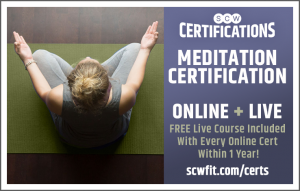
Remember that time is precious. Asking yourself how you want to spend the days, hours and minutes of your life can support your relationship with your body.
If disliking your body is bringing discomfort into your life, mindfulness offers an invitation to bring compassion into the moments when this occurs. Once we’ve observed body thoughts without judgment, we can choose to let them go. If “body love” feels like pressure and too distant to explore now, consider the possibility of “body neutrality,” which is the space between positive and negative polarities.
Moment-to-moment awareness of the remarkable functionality of the body invites body respect and body appreciation. Body acceptance is the opportunity for each of us to be peacefully present with and within our own unique bodies, doing our best to nurture ourselves one moment at a time.
 About the Author: Nina Smiley
About the Author: Nina Smiley
Nina Smiley, PhD, director of mindfulness programming at Mohonk Mountain House in New Paltz, New York, holds a doctoral degree in psychology from Princeton University. She is the coauthor of The Three Minute Meditator and Mindfulness in Nature, as well as the CD “Mini-Meditations That Will Enhance Your Life.” Smiley has studied mindfulness with Jack Kornfield, founder of Spirit Rock Meditation Center, and Sharon Salzberg, cofounder of Insight Meditation Society, among others. She delights in sharing insights about meditation and wellness, and her work has been featured in numerous renowned publications.
Follow us on IG: https://www.instagram.com/scwmania/
Like our FB page: https://www.facebook.com/scwmania
Follow us on X: https://twitter.com/scw_mania
Connect with us on LinkedIn: https://www.linkedin.com/company/scwfit/

Macronutrients: The Key to Survival
Part 3: Fats
Our bodies need all of these macronutrients – Carbohydrates, Protein, Fats, and Water. This month, our spotlight is on Fats. Foods that contain heart healthy fat are vital to our well-being. Fat plays an important role in many body processes, including making hormones and helping with the absorption of vitamins.
There are four different types of dietary fat in foods: Saturated fats, Monounsaturated fats, Polyunsaturated fats, and Trans Fats. Each of these types have different chemical structures and effects on the body.
The best types of fat to consume in a healthy diet are Monounsaturated and Polyunsaturated. These forms can be found in foods like olives, avocados, nuts, seeds, and cold-water fish (salmon, mackerel, tuna.) Unsaturated fats are beneficial to health because they have been shown to improve blood cholesterol levels by increasing High-Density Lipoprotein (HDL), reduce inflammation and support cell growth.
Cold-water fish (like salmon) provide Omega 3 Fatty Acids, which is important as the body cannot make them. Since we must get these fats from food, it’s imperative to include fish in the diet two to three times a week. Some plant sources of Omega 3 fats are flax seeds, chia seeds, walnuts, and canola oil. These fats support the body in many ways, especially notable is how they protect against heart disease. Omega 3’s can lower blood pressure and improve the function of blood vessels. They are also used to help make hormones that regulate blood clotting and inflammation.
The Recommended Daily Allowance of Fats is 20% – 35% of total daily caloric intake. It is important to note that fat calories can add up quickly! Fat is more calorically dense, with 9 calories per gram. It’s more than double the number of calories compared to protein and carbohydrates, which are 4 calories per gram. In a balanced nutrition plan, this means fat sources will have much smaller portion size compared to other macronutrients. If you use your hand as a measure of portion size, protein is the size and thickness of your palm, carbohydrates (like vegetables and fruits) are the size of your fist or (starchy carbs like grains) fit in your cupped hand, and fat is the size of your thumb. Portion size is important to keep even with healthy fats.
What about Saturated Fats? Unfortunately, they are not as healthy, and are found in abundance in the American diet. Saturated fats are mainly found in animal foods like beef, cheese, bacon, baked goods, whole milk, butter, and fast food. Some plant sources also include saturated fats, including coconut oil, palm oil, and palm kernel oil. The Dietary Guidelines for Americans recommends getting less than 10 percent of calories daily from saturated fats. Instead of thinking about cutting out saturated fats, think about how you can replace them with unsaturated fats. This has shown to be better for overall health.
Not only are fats a vital part of our health they are also great at helping create a feeling of satiety. Incorporating the balance of a protein, a carbohydrate, and a heart healthy fat into a meal will help your body absorb the nutrients better and keep you feeling full longer.
It’s easy to add unsaturated fats to a meal. Here’s a few ideas: sprinkle ground flax seed into your yogurt or smoothie, add avocado to your wrap or sandwich, use olive oil to make your own homemade salad dressing, top your salad with a few walnuts or olives, pair your banana or apple with almond butter. But don’t forget to watch the portion size!
As you can see, fats are just as important to our health as all the other macronutrients. It may take a little focus on replacing the unhealthy fats with the “better for you” fats. Every little change helps! What can you add to your meals today to get those heart healthy and body supporting fats into your diet?
 About the Author: Amber Toole
About the Author: Amber Toole
Amber Toole is an ACE Certified Personal Trainer with a Bachelor of Science degree in Physical Education and Health from Georgia Southern University. She has 30 years of experience in the Fitness Industry and loves to share her expertise with other Fitness Professionals. It is her life’s mission to spread the truth about fitness and nutrition through education. She is the owner of The Training Toole – a Fitness and Nutrition Studio in Ocala, Florida, an SCW Educator and Fit Pro Mentor.
Follow us on IG: https://www.instagram.com/scwmania/
Like our FB page: https://www.facebook.com/scwmania
Follow us on X: https://twitter.com/scw_mania
Connect with us on LinkedIn: https://www.linkedin.com/company/scwfit/
Are You The Winner?
EXTRA, EXTRA, READ ALL ABOUT IT!!!
SCW Fitness Education is excited to announce the latest winners for the WATERinMOTION® and S.E.A.T. (Supportive Exercise for Ageless Training) Fitness Enter-To-Win contest. These two specialized programs offer one-of-a-kind, pre-choreographed formatting for Aquatic and Active Aging exercise.
We’d like to recognize Sineyda Ortiz, the Assistant Director of Campus Recreation at the University of Texas – Arlington as the winner of a FREE WATERinMOTION® Online Certification. As the winner, Sineyda will have the knowledge to teach all three WATERinMOTION® formats; Original, Platinum, and Strength, along with the support and marketing needed to get the program licensed and splashing at UT-Arlington. CONGRATULATIONS SINEYDA!!!
The winner of the FREE Online S.E.A.T. Fitness Certification goes to Tammy Kershaw, a Studio Owner and Fitness Instructor in Connecticut. Being certified in S.E.A.T. Fitness will not only provide the skills needed to train active agers from head-to-toe, but it will also introduce an opportunity to those who may be hesitant to join a gym or take the first step in leading a healthy and active life.
CONGRATULATIONS TAMMY!!!
If you are interested in learning more about WATERinMOTION® or S.E.A.T. Fitness, please take a peek at these websites.
Feel free to reach out to us via a Zoom chat for more information about licensing these incredible programs: www.calendly.com/SCWFIT
You can also enter-to-win the next round of contests to be chosen in December. Thanks again to all those who entered and CONGRATULATIONS to Sineyda and Tammy.
Follow us on IG: https://www.instagram.com/scwmania/
Like our FB page: https://www.facebook.com/scwmania
Follow us on X: https://twitter.com/scw_mania
Connect with us on LinkedIn: https://www.linkedin.com/company/scwfit/
Looking for a New Job? SCW Can Help!
Facilities need you! Whether it’s Teachers, Trainers, Directors, or Managers, SCW’s new FREE JOB BOARD is supporting the industry’s need for qualified fitness pros.
We post openings in all three of our monthly e-newsletters: Spotlite, Health & Fitness Business News, and Tidal Waves which are emailed out to tens of thousands of fitness professionals teaching and training in all formats along with managers and directors at all fitness facilities: big box, gyms, boutique, studios, not for profits and independent centers.
Group Exercise Instructor
Woman’s Center for Wellness – Baton Rouge, LA
Candidate will instruct fitness classes, such as Yoga, Indoor Cycling, Aqua, Mat Pilates, Zumba, strength training, etc.
Candidate must have group exercise certification, professional liability insurance and CPR/AED required; specialty certification in Yoga, Indoor Cycling, Aqua, REFIT, HIIT, Mat Pilates, Zumba, strength training and/or circuit preferred.
Fitness Coordinator
Georgia Southern University – Statesboro, GA
This position develops and supervises a comprehensive group fitness program, to include small group training, and related special events.
Assistant Director, Fitness
Leonard J. Kaplan Center for Wellness – UNC Greensboro
The Assistant Director, Fitness is responsible for the overall design, management, and implementation of a comprehensive fitness program for the students, faculty, staff and UNC Greensboro community. This includes leadership of two professional positions and a graduate assistant as well as student employees.
Club Leader
Element3 Health – Chicago Heights, IL
Element 3 Health is looking for a skilled club leader to lead a club for older adults. Theses clubs include fitness, yoga, dance, and arts and crafts. This, is a unique opportunity to teach an in-person session, to actively train older adults and be responsible for your own club.
Exercise Physiologist
Woman’s Center for Wellness – Baton Rouge, LA
Conducts 1-on-1 and group training exercise sessions with cancer survivors, bone health sufferers, and other related diagnoses. Other duties include exercise testing and evaluation, and the development of appropriate exercise programs. Performs other duties assigned by department management. Must be knowledgeable of exercise standards and guidelines established by the ACSM.
 We’re always looking for great content highlighting the newest things in the world of fitness. Please submit your article directly to editor@scwfit.com for immediate consideration!
We’re always looking for great content highlighting the newest things in the world of fitness. Please submit your article directly to editor@scwfit.com for immediate consideration! Spotlite, April 16, 2025
Spotlite, January 5, 2025
Spotlite, November 11, 2024
Spotlite, September 27, 2024
Spotlite, August 31, 2024
Spotlite, July 26, 2024
Spotlite, June 22, 2024
Spotlite, May 23, 2024
Spotlite, April 26, 2024
Spotlite, March 22, 2024
Spotlite, February 19, 2024
Spotlite, January 20, 2024
Spotlite, December 21, 2023
Spotlite, November 18, 2023
Spotlite, October 22, 2023
Spotlite, September 21, 2023
Spotlite, August 19, 2023
Spotlite, July 19, 2023
Spotlite, June 19, 2023
Spotlite, May 18, 2023
Spotlite, April 21, 2023
Spotlite, March 28, 2023
Spotlite, February 18, 2023
Spotlite, January 21, 2023
Spotlite, December 16, 2022
Spotlite, November 19, 2022
Spotlite, October 22, 2022
Spotlite, September 24, 2022
Spotlite, August 23, 2022
Spotlite, July 22, 2022
Spotlite, June 20, 2022
Spotlite, May 18, 2022
Spotlite, April 20, 2022
Spotlite, March 25, 2022
Spotlite, February 17, 2022
Spotlite, January 14, 2022
Spotlite, December 17, 2021
Spotlite, November 18, 2021
Spotlite, October 25, 2021
Spotlite, September 16, 2021
Spotlite, August 9, 2021
Spotlite, July 10, 2021
Spotlite, June 8, 2021
Spotlite, May 14, 2021
Spotlite, April 30, 2021
Spotlite, March 30, 2021
Spotlite, February 23, 2021
Spotlite, January 20, 2021
Hyatt Regency Dulles
Herndon, VA
Hyatt Regency SF Airport
Burlingame, CA
Caribe Royale Orlando
Orlando, FL
May 1-4, 2025
May 2026
Grand Hyatt Atlanta Buckhead
Atlanta, GA
July 24-27, 2025
July 2026
Westin Galleria Dallas
Dallas, TX
August 21-24, 2025
August 28-30 2026
Rosemont Chicago O’Hare
Rosemont, IL
Oct. 2-5, 2025
Oct. 2-4 2026
Doubletree by Hilton
Danvers, MA
Nov. 13-16, 2025
Nov. 13-15, 2026






